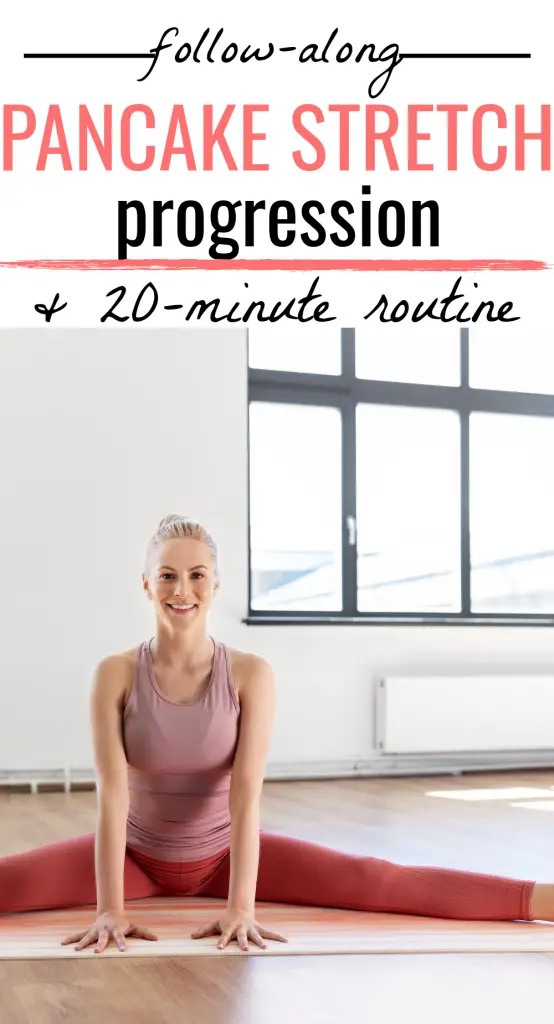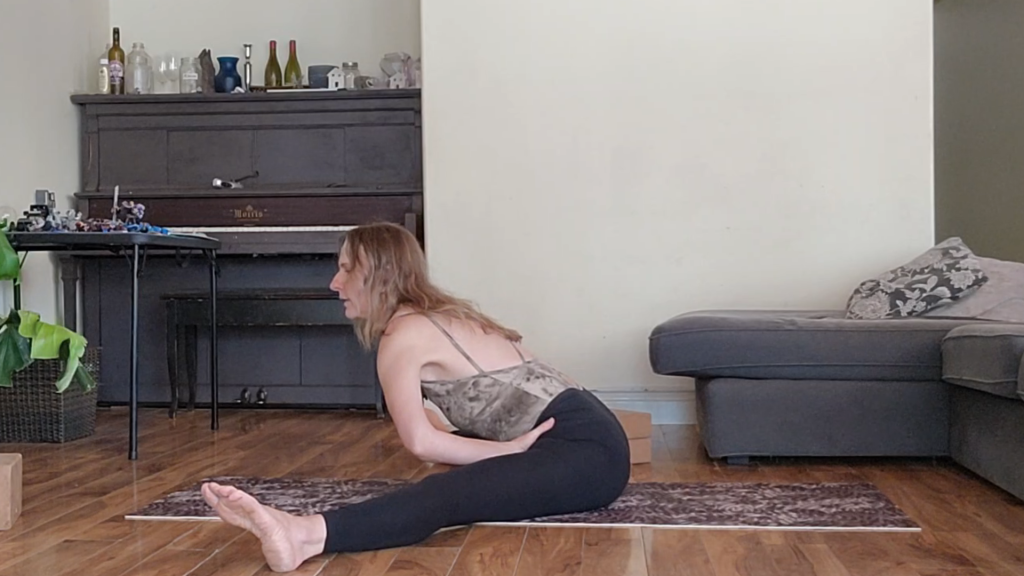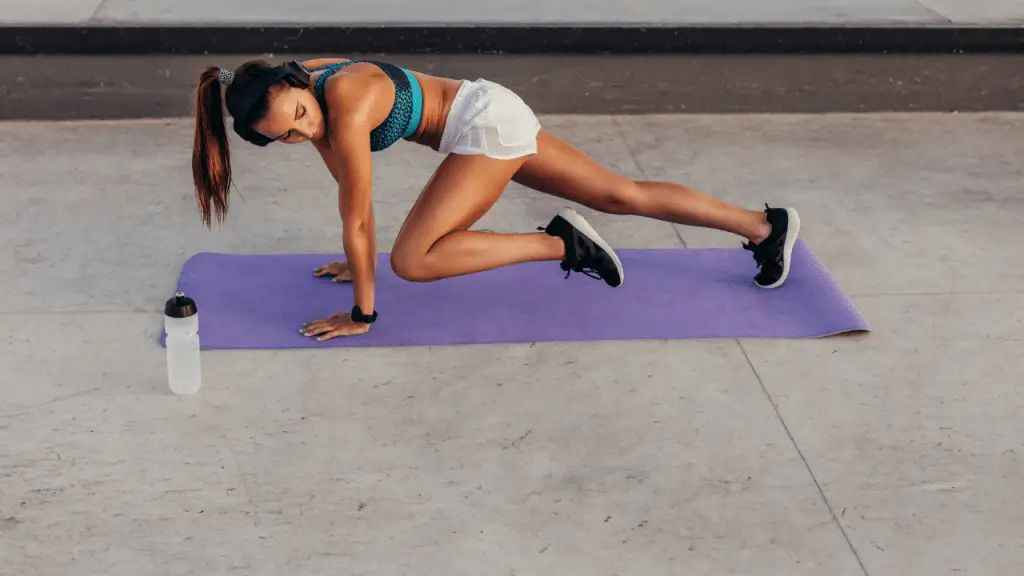The following pancake stretch progression is my new favorite pancake routine. Scroll down for the follow-along video routine.
Pancake Stretch for Beginners
Before we get into my pancake stretch progression, I would like to discuss some key elements of the pancake stretch, like why you should do it, why it’s difficult, and what muscles are involved. Also, I am going to give you some beginner tips.
What is Pancake Stretch Good For?
The pancake stretch is a popular stretching exercise that is commonly used for several purposes, including:
- Improving flexibility: This stretch helps increase flexibility in the hips and lower back, improving overall range of motion and mobility.
- Relieving lower back pain: The pancake stretch is also helpful for reducing lower back pain by stretching the muscles in this area.
- Increasing athletic performance: This stretch can help improve athletic performance by loosening tight hips, enhancing stride length, and reducing the risk of injury.
- Alleviating tension: The pancake stretch can help relieve stiffness in the hips and lower back, leading to a greater sense of relaxation and reduced stress.
Perform the pancake stretch properly and gradually increase the intensity of the stretch to avoid injury. My pancake stretch progression video is perfect for this purpose.
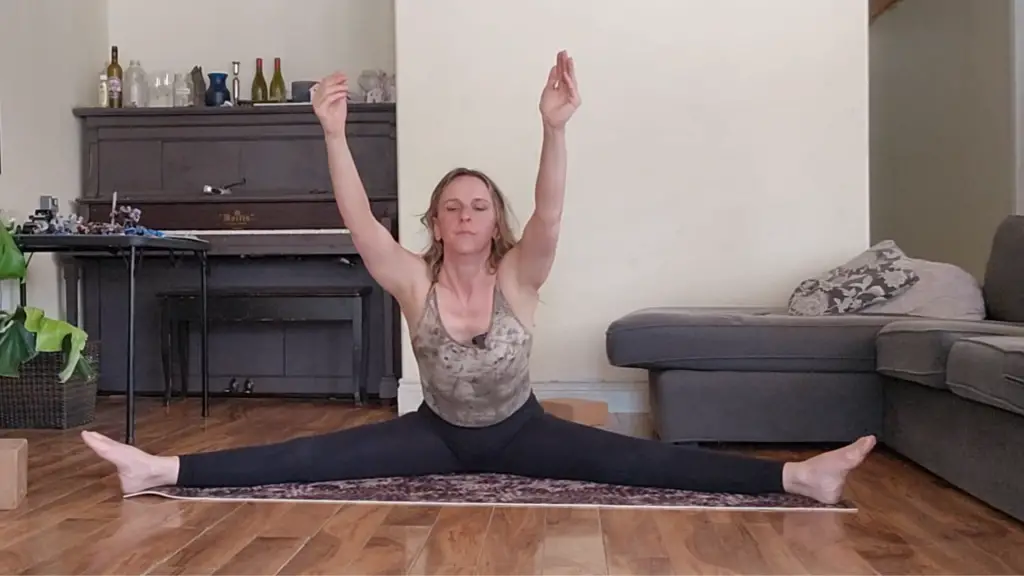
Why is the Pancake Stretch so Hard?
The pancake stretch is considered difficult for several reasons. First, it requires high hip flexibility and mobility, particularly in the hips, groin, and lower back. For many people, these areas are tight and stiff, making it challenging to perform the stretch effectively.
Second, the pancake stretch can be physically demanding. It requires you to maintain a low, stable position while keeping your legs straight and your hips level, which can strain your muscles and joints.
Finally, the pancake stretch can be mentally challenging because it requires you to let go of control and trust your body to maintain the stretch. This can be difficult for people who tend to hold tension in their muscles, especially in their hips and lower back.
Overall, the pancake stretch is challenging, but with consistent practice, most people can improve their flexibility and mobility over time.
Which Muscles Does the Pancake Stretch?
The pancake stretch progression is a dynamic stretching routine designed to stretch several muscle groups. Some of the primary muscle groups that are targeted by the pancake stretch include:
- Hamstrings: The hamstrings are located at the back of the thigh and are responsible for hip extension and knee flexion. The pancake stretch can help to loosen and warm up the hamstrings before exercise.
- Glutes: The glutes, or the muscles in your buttocks, play an essential role in stabilizing the pelvis and maintaining proper posture. The pancake stretch can help to loosen and warm up the glutes.
- Hip flexors: The hip flexors are a group of muscles located at the front of the hip that control movement in the hip and thigh. The pancake stretch can help to loosen and warm up the hip flexors.
- Lower back: The lower back muscles help to stabilize the spine and maintain proper posture. The pancake stretch can help loosen and warm the lower back muscles.
Overall, the pancake stretch is a tremendous dynamic stretching exercise that can help prepare your body for physical activity by warming up several muscle groups.
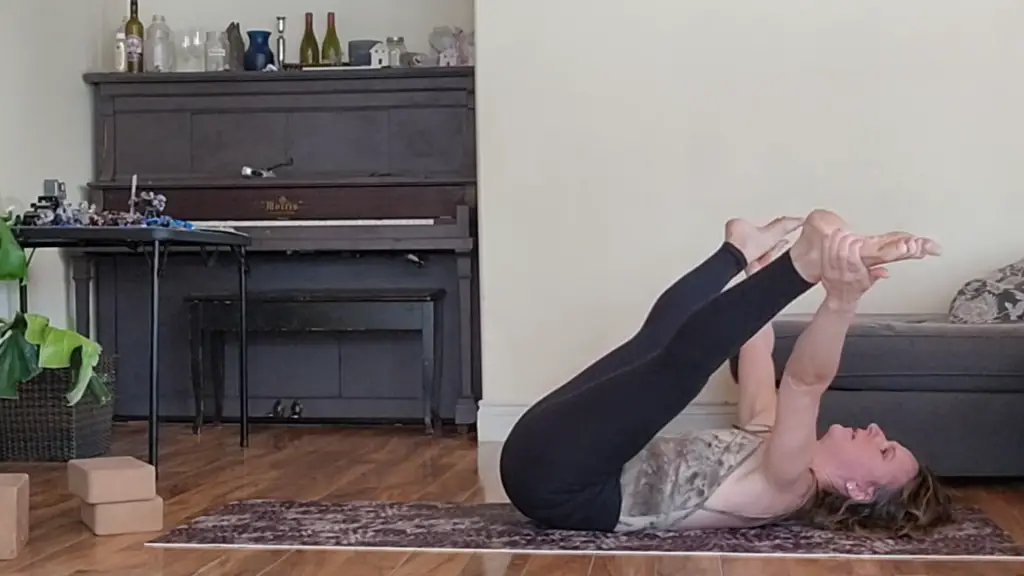
Beginner Tips for the Pancake Stretch
The pancake stretch progression I included in this post will be difficult for beginners (you can try it and modify it, of course!). Beginners should practice opening their hamstrings with the forward fold and other more beginner-friendly hip-opening routines. For example, check out my Top 9 Stretches for Hip Flexibility With Follow-Along Yoga Routine, my 10 Yoga Poses for Flexibility for Beginners, my Lower Body Mobility Exercises With Full-Length Video Routine, or How to Improve Your Flexibility for Beginners.
You may also enjoy this Pancake Stretch Progression video.
Also, if you would like to commit to improving your flexibility, you will enjoy my Full-Body Flexibility Transformation.
My Full-Body Flexibility Program is the ultimate step-by-step yoga for flexibility and strength for beginners program.
Stage one focuses on building your flexibility gradually for the splits. Stage two includes backends to your training schedule, and stage three adds more advanced yoga poses for flexibility, like King Pigeon and the standing splits.

Pancake Stretch Progression
I have been working on my pancake for over a year. While I have improved significantly, my chest can still rest on the floor, even though I stretch almost daily. I was a very stiff beginner, having never done any flexibility or mobility activity before and starting at age 43. You can learn more about my journey by reading my post 1-Year Yoga Transformation: Before and After Pictures.
My favorite pancake routines over the last year have been Top 9 Stretches for Hip Flexibility and my 6 Most Effective Side Splits Stretches (Plus Follow Along Routine). I learned some new stretches I wanted to try, so I created today’s pancake stretch progression routine.
Pancake Stretch Routine Video
In today’s pancake stretch routine, we will start on your back with some pike stretches and mobility exercises and do some hip flexor strengthening exercises. Then, we will open your hips with mobility stretching in the seated wide-legged stretch. Lastly, we will use the wall to depend on your pancake stretch.
How to Improve Your Pancake Mobility
Improving your pancake mobility involves exercises that help increase the range of motion and flexibility in your hips, ankles, and lower body. Here are some exercises you can try to improve your pancake mobility:
- Squat Holds: Stand with your feet hip-width apart and slowly lower your body into a squat position, holding for 10-15 seconds. Repeat for 2-3 sets.
- Lunges: Step forward with one foot and lower your back knee towards the ground. Push back to the starting position and repeat with the other leg. Do 2-3 sets of 10-12 reps on each leg.
- Hip Bridge: Lie on your back with your knees bent and feet flat on the ground. Lift your hips up towards the ceiling, then slowly lower back down. Repeat for 2-3 sets of 10-12 reps.
- Ankle Circles: Sit with your legs extended in front of you and lift one foot off the ground. Make small circles with your ankle, then reverse direction. Repeat for 2-3 sets of 10-12 reps on each ankle.
- Leg Swings: Stand with your feet hip-width apart, gently swing one leg forward and back, then switch legs. Repeat for 2-3 sets of 10-12 reps on each leg.
It’s essential to warm up before attempting any of these exercises and to stretch after to avoid injury. Remember, improved mobility takes time and consistency, so be patient and stick with it.
